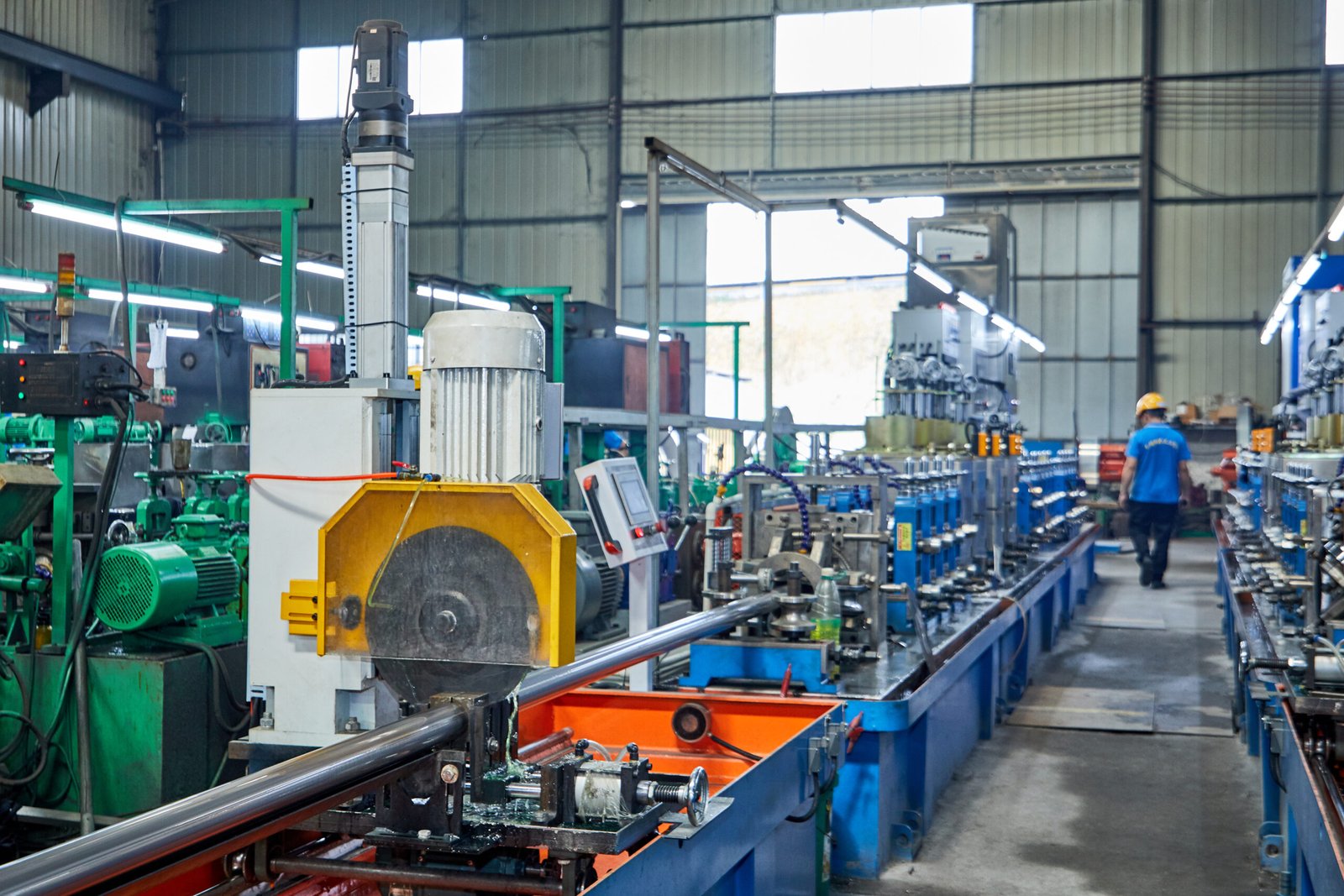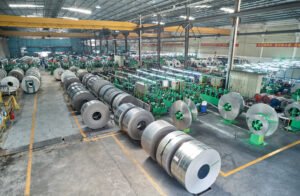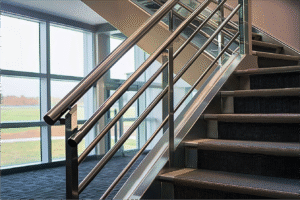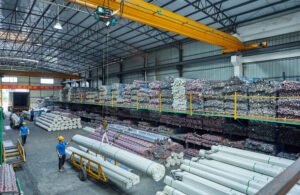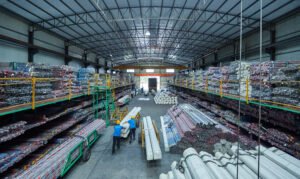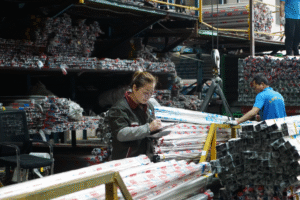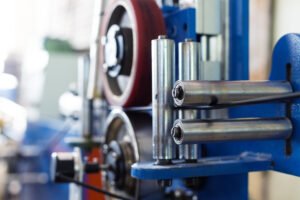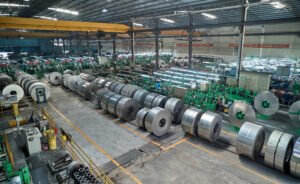Pressure Rating Calculations per ASME B31.3 for Stainless Pipes
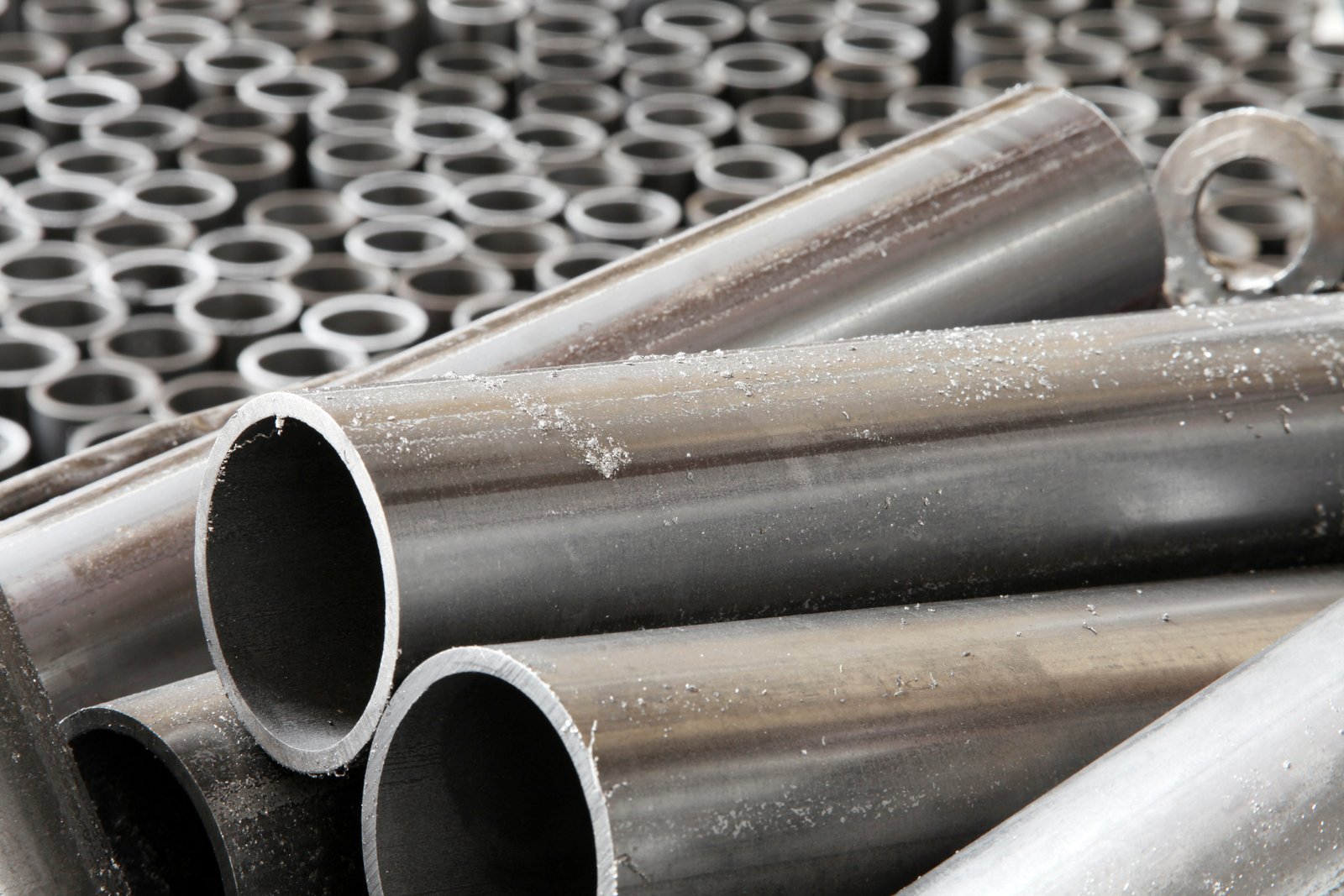
Struggling with the complexities of pipe pressure ratings1 can be daunting. The fear of a miscalculation leading to catastrophic failure, project delays, and budget overruns is a real concern for any engineer or contractor. By mastering the ASME B31.3 standard, you can transform this uncertainty into confidence, ensuring both safety and operational excellence.
To calculate the pressure rating for stainless pipes per ASME B31.3, you must use the design formula P = (2SEt)/D. This calculation relies on key parameters: the pipe's outside diameter (D), wall thickness (t), the material's allowable stress (S) at design temperature, and quality factors (E).
This process, while governed by a seemingly simple formula, is layered with critical details that ensure the integrity of your entire piping system. It’s a language of safety spoken globally, from a chemical plant in Southeast Asia to a water treatment facility in the Middle East. This guide will walk you through each step, ensuring you have the knowledge to apply this standard correctly and confidently.
As someone who has navigated countless international projects at MFY, I’ve seen firsthand how a deep understanding of standards like ASME B31.3 separates successful projects from problematic ones. It’s not just about theoretical knowledge; it’s about practical application. For instance, a client might select a material based on its raw strength, but without considering the temperature's effect on allowable stress, the entire design could be flawed. This guide goes beyond the formulas to explore the critical thinking required, drawing on real-world scenarios to demonstrate how these calculations protect assets and, more importantly, lives. We will delve into how material selection, manufacturing tolerances, and operating conditions are interwoven, empowering you to build not just piping systems, but resilient and competitive supply chains.
What is ASME B31.3 and its relevance to stainless pipes?
Are you feeling overwhelmed by the alphabet soup of industry codes and standards? It's a common problem where choosing the wrong code can lead to either costly over-engineering or, far worse, dangerous under-engineering. The solution lies in recognizing ASME B31.32 as the definitive global standard for process piping systems.
ASME B31.3 is the governing standard for designing, constructing, and inspecting process piping systems. Its relevance to stainless pipes is paramount, as it provides the specific allowable stress values and design rules necessary to ensure these pipes can safely handle the corrosive fluids and diverse pressures found in industrial applications.
For years, I’ve worked with engineering contractors who are tasked with building complex facilities, from petrochemical plants to pharmaceutical factories. A recurring theme is the absolute necessity for a universal standard that ensures reliability and safety across borders. ASME B31.3 serves as this common language. It covers the entire lifecycle of a piping system, from material selection and design to fabrication, erection, inspection, and testing. Unlike other codes that might focus on power generation (B31.1) or pipelines (B31.4/B31.8), B31.3 is specifically tailored for the intricate and often hazardous environments of chemical processing, oil refining, and similar industries. This focus is what makes it so critical. It's not just a book of rules; it's a comprehensive framework built on decades of experience and engineering wisdom, designed to prevent system failure. For stainless steel, a material prized for its corrosion resistance and durability, B31.3 provides the nuanced guidelines required to harness its full potential safely.
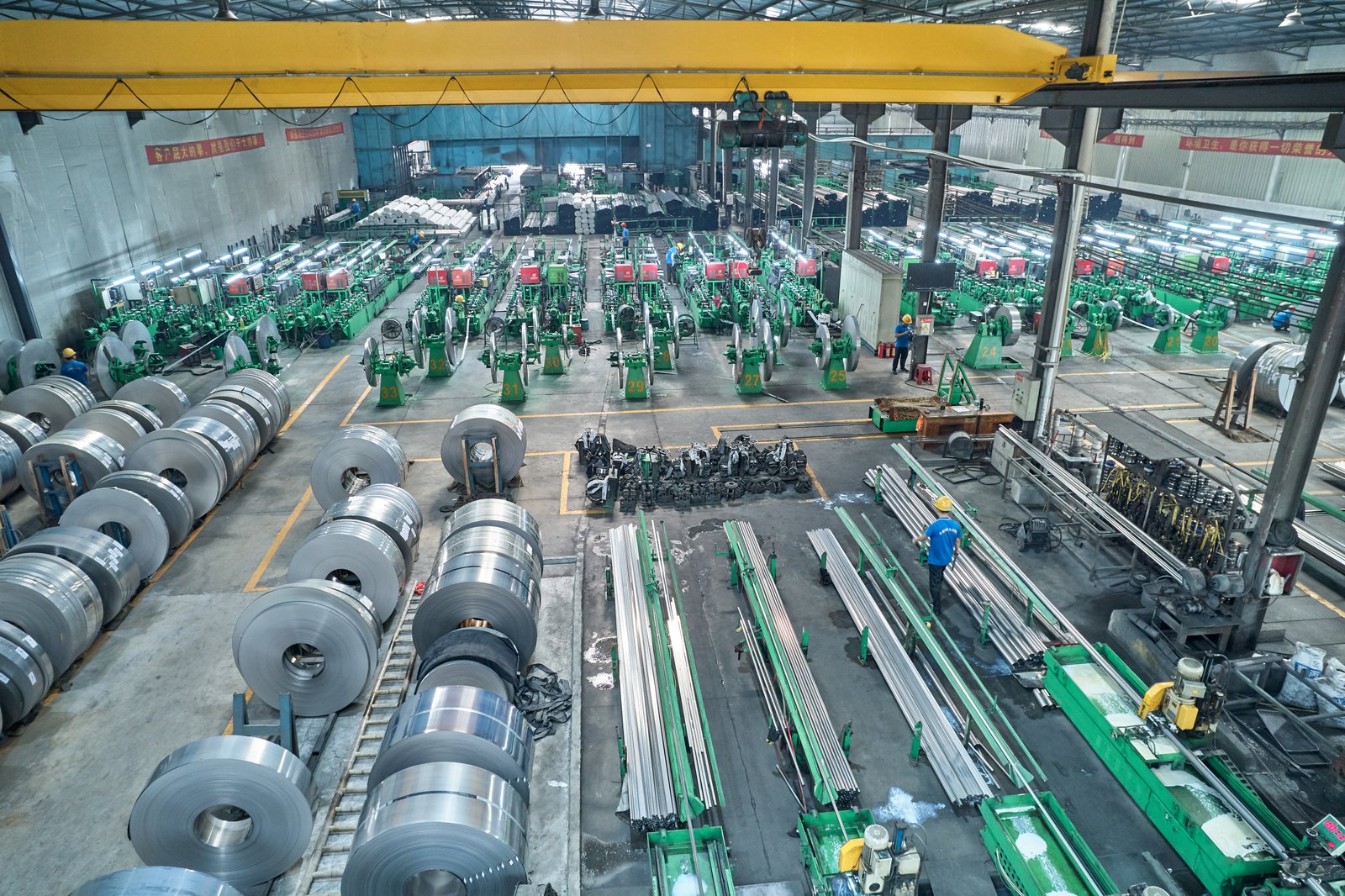
I recall a project with a major Engineering & Construction (E&C) contractor in the Middle East who was building a large-scale desalination plant. The combination of high-pressure reverse osmosis and the highly corrosive nature of brine created a significant engineering challenge. The client’s initial specifications were robust, but their team was less familiar with the specific nuances of applying ASME B31.3 to the duplex stainless steel grades they needed. They understood the 'what' but needed help with the 'how' and 'why'. Our role at MFY went beyond simply supplying pipes. We collaborated with their engineering team, walking them through the specific clauses in B31.3 relevant to duplex materials, particularly concerning allowable stress calculations at their specified operating temperatures and the importance of the weld joint quality factor (E) for the welded pipes they were using. This collaborative approach ensured they not only received compliant materials with full traceability but also felt confident in their design's safety and long-term reliability. It was a perfect example of how a supplier's deep understanding of these standards can provide immense value, transforming a simple transaction into a genuine partnership and ensuring the project’s success. This experience solidified my belief that true global trade is built on this shared understanding and mutual trust in established standards.
The Scope and Philosophy of ASME B31.3
ASME B31.3, often referred to as the Process Piping Code, establishes the minimum requirements for the safe design and construction of piping systems. Its scope is extensive, covering systems that transport a wide range of fluids, including chemicals, petroleum products, water, and steam. It is typically applied in facilities like chemical plants, oil refineries, pharmaceutical manufacturing plants, and food processing facilities. The core philosophy of the code is safety and reliability. It achieves this by providing a set of conservative rules derived from material science, stress analysis, and extensive field experience, ensuring that piping systems can withstand their intended operating pressures, temperatures, and other loads throughout their service life.
The code is not a design handbook but a set of minimum requirements. It allows engineers to use more rigorous analysis where needed but provides a trusted baseline for everyday engineering. This distinction is crucial; B31.3 sets the floor for safety, not the ceiling for innovation. For global companies like ours, this standardized approach is invaluable. It means that a pipe we manufacture in China for a project in India is designed and will be tested to the same safety standard as one used in Russia, creating a predictable and reliable global supply chain. This universal acceptance minimizes cross-border regulatory friction and gives our clients confidence in the integrity of their assets.
Differentiating B31.3 from other codes is key. For example, ASME B31.1, the Power Piping Code, deals with high-pressure steam and water systems in power generation plants, which have different risk profiles and operating cycles than process plants. B31.3 accounts for a wider variety of corrosive, flammable, or toxic fluids, placing a greater emphasis on material compatibility and containment. This focus makes it the indispensable standard for the vast majority of our clients in the manufacturing and E&C sectors, whose primary concern is the safe handling of diverse process fluids.
Why Stainless Steel Requires Specific Attention under B31.3
Stainless steel is not a single material but a family of alloys, each with unique properties. ASME B31.3 pays specific attention to them for several reasons. First, the mechanical properties of stainless steel, particularly its strength and ductility, vary significantly with temperature. As temperature increases, the allowable stress—the maximum stress a material can safely endure—decreases. The code provides detailed tables, such as Table A-1, which list these allowable stress values for different grades (e.g., 304L, 316L, Duplex 2205) across a wide range of temperatures. Using the correct value from this table is one of the most critical steps in the calculation.
Second, the corrosion resistance that makes stainless steel so valuable is also a key consideration in the code. While the design formula calculates the thickness required for pressure containment, the engineer must also add a "corrosion allowance." This is an additional thickness added to the pipe wall to account for material loss over the pipe's design life due to corrosion or erosion. For a client in the chemical industry, this allowance might be significant and will depend entirely on the specific fluid being transported, its concentration, and temperature. B31.3 forces this consideration, ensuring long-term integrity.
ly, the code addresses different manufacturing methods. A seamless pipe (produced with no welded seam) has a higher quality factor (E=1.00) than a welded pipe because it has no seam that could potentially be a point of weakness. For electric-resistance welded (ERW) or fusion-welded (EFW) pipes, the 'E' factor is lower (e.g., 0.85 for ERW), which directly impacts the pressure rating calculation by effectively de-rating the pipe's strength. At MFY, we provide both seamless and welded tubes, and we always ensure our clients understand the implications of this factor on their design calculations, providing Mill Test Certificates (MTCs) that clearly state the material specification and manufacturing process.
Global Implications and Supplier Responsibility
In a globalized market, adherence to internationally recognized standards like ASME B31.3 is not just good practice; it's a commercial necessity. When an E&C contractor in Southeast Asia sources materials for a project, they need absolute certainty that the components meet the design specifications and regulatory requirements. Using B31.3 as a common framework eliminates ambiguity and builds trust between the client, the engineering firm, and the material supplier. It ensures that everyone is speaking the same technical language, regardless of their native tongue.
This places a significant responsibility on the supplier. As a manufacturer and exporter, our commitment at MFY is to guarantee that every stainless steel pipe we deliver is fully compliant with the specified standards. This involves rigorous quality control throughout our integrated supply chain, from sourcing raw materials to cold-rolling and final tube manufacturing. Our responsibility culminates in providing comprehensive documentation, most importantly the MTC, which is the material's "birth certificate." It provides a traceable record of the pipe's chemical composition, mechanical properties (like tensile and yield strength), and confirmation that it meets the specified ASTM standard (e.g., ASTM A312 for seamless and welded pipe), which is a prerequisite for applying ASME B31.3 rules.
This commitment to compliance has direct commercial benefits for our clients. It streamlines their procurement process, reduces the risk of costly delays due to non-compliant materials failing inspection, and ultimately enhances the safety and reputation of their final project. A reliable supplier doesn't just sell steel; they sell confidence and peace of mind.
| Feature Comparison | ASME B31.3 (Process Piping) | ASME B31.1 (Power Piping) |
|---|---|---|
| Primary Application | Chemical plants, oil refineries, pharma, food processing | Power generation stations, geothermal heating systems |
| Fluid Scope | Wide range: flammable, toxic, corrosive, cryogenics | Primarily steam, water, and boiler feedwater |
| Design Focus | High emphasis on material compatibility and containment | High emphasis on high-pressure steam and cyclic loading |
| Typical Materials | Broad range, including all stainless steels, alloys | Primarily carbon steel, alloy steels for high temp |
| Key Consideration | Chemical corrosion, temperature variance, fluid hazards | High-temperature creep, thermal fatigue, high pressure |
ASME B31.3 governs process pipingTrue
ASME B31.3 is specifically designed for process piping systems in chemical plants, refineries, and similar industrial facilities.
B31.3 is for power plantsFalse
Power plants primarily use ASME B31.1 (Power Piping Code), not B31.3 which is for process piping.
What are the initial parameters needed for pressure rating calculations?
Embarking on a pressure calculation without having all the necessary data is a recipe for frustration. You risk wasting valuable time and effort on an incomplete analysis, only to have to start over. The solution is to begin with a clear, non-negotiable checklist of all the required initial parameters before a single calculation is made.
The essential initial parameters for ASME B31.3 calculations are the pipe's outside diameter (D), nominal wall thickness (t), the material's allowable stress value based on its specification and design temperature, and the relevant quality (E) and temperature coefficient (Y) factors.
These parameters form the bedrock of a safe and accurate design. Think of them as the coordinates on a map; without the correct ones, you simply cannot reach your destination. I often advise our clients, particularly distributors who serve a wide range of smaller manufacturing companies, to create a standard intake form for any pressure-rated application. This form ensures they capture every critical piece of information from their end-users upfront. This simple procedural step prevents the back-and-forth that can delay projects and erode confidence. For instance, knowing the precise design temperature is not a "nice-to-have," it's fundamental. The allowable stress of stainless steel can drop significantly at elevated temperatures, a fact that, if ignored, could lead directly to system failure.
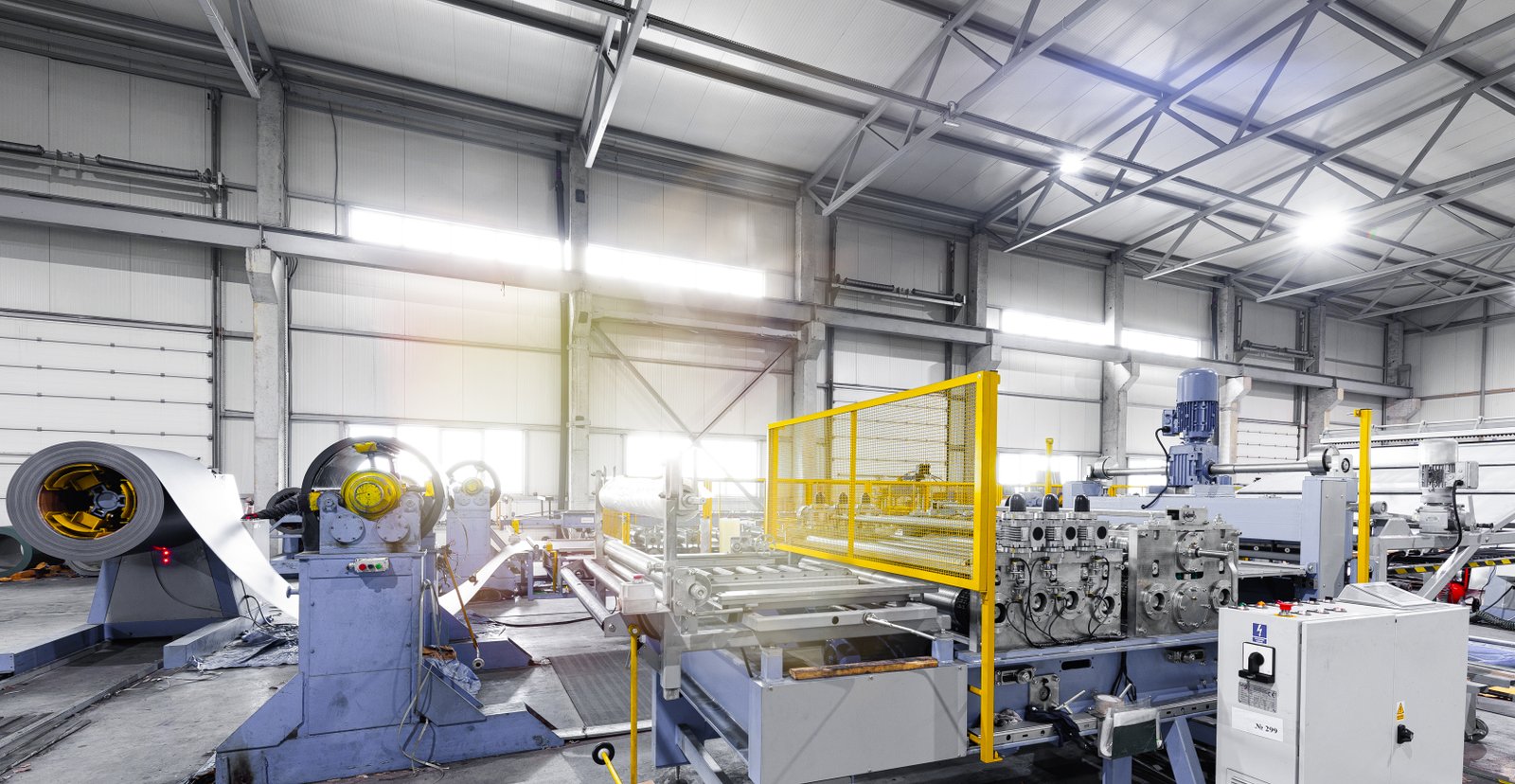
Let's return to the case of our E&C client building the desalination plant in the Middle East. The initial phase of our collaboration was dedicated entirely to defining these parameters with painstaking detail. The high-salinity seawater meant that a superior grade of duplex stainless steel was chosen for its excellent corrosion resistance. This immediately defined the material specification. Next, the design temperature was established not just for normal operation but also for potential upset conditions, ensuring the design was robust enough for the worst-case scenario. The outside diameter and wall thickness were then determined based on flow rate requirements and preliminary pressure estimates. ly, because they were using a combination of seamless and welded pipes3 from our MFY inventory, we had to clearly define the weld joint quality factor (E) for each segment of the piping system. This meticulous data-gathering phase took time, but it paid enormous dividends. It allowed the calculations to be performed correctly the first time, preventing costly redesigns and ensuring the procurement process was seamless. It underscored a principle we champion at MFY: 80% of a successful outcome is rooted in meticulous preparation. This discipline ensures that when the calculations are finally performed, they are built on a foundation of accurate and reliable data, leading to a design that is both safe and cost-effective.
Geometric Parameters: Diameter and Wall Thickness
The most fundamental inputs are the pipe's physical dimensions: the outside diameter4 (D) and the wall thickness (t). These are not just numbers pulled from a catalog; they require careful consideration. The 'D' in the ASME B31.3 formula is the specified outside diameter of the pipe. For most standard pipe sizes, this is a well-defined value available in dimensional charts (e.g., ASME B36.10M for welded and seamless wrought steel pipe and B36.19M for stainless steel pipe). It's a straightforward parameter but forms the basis of the entire stress calculation.
The wall thickness, 't', is more nuanced. You start with the nominal wall thickness associated with a given pipe schedule (e.g., Schedule 10S, 40S, 80S). However, manufacturing processes are not perfect and have accepted tolerances. The ASME code is conservative and built for safety, so for calculations, you must account for this. Standard manufacturing tolerance for most pipes, as defined in standards like ASTM A999, is -12.5%. This means a pipe with a nominal wall thickness of 10 mm could be as thin as 8.75 mm in some spots. Therefore, the prudent and correct approach is to use the nominal wall thickness minus this tolerance in your calculation, or t = 0.875 * t_nominal.
This distinction is critical. Using the nominal thickness without accounting for tolerance would result in an overestimation of the pipe's pressure-containing capability. For a project where a distributor is supplying pipes to a critical manufacturing application, making this adjustment is a fundamental part of providing responsible service. It ensures the end-user's system has the required safety margin built in from the very start, protecting against potential manufacturing variations.
Material Properties and Design Temperature
The 'S' value, or the basic allowable stress5 for the material at the design temperature, is arguably the most critical material property in the calculation. This value is not the material's yield strength or tensile strength; it is a de-rated value that already incorporates significant safety factors. ASME B31.3 provides these values in the mandatory Appendix A, Table A-1. To find the correct 'S' value, you must first know the exact material specification (e.g., ASTM A312 TP316L) and the maximum temperature the pipe will experience during operation, including any temporary excursions.
The design temperature is a crucial parameter that dictates the 'S' value. As temperature rises, metals lose strength. For example, the allowable stress for a common stainless steel grade like 316L at 100°F (38°C) is 20,000 psi (20.0 ksi). However, at 600°F (316°C), that value drops by about 25% to 15,100 psi. If an engineer were to use the ambient temperature 'S' value for a pipe that actually operates at a higher temperature, they would be grossly overstating its strength, creating a dangerous and non-compliant situation.
At MFY, we stress the importance of clear communication on this point. When a client requests a quote, we always ask for the design temperature. This allows us to have a more meaningful conversation about material selection. Sometimes, a client might consider a less expensive material like 304L, but if their design temperature is high, the lower allowable stress of 304L might require a thicker, heavier, and ultimately more expensive pipe wall than if they had started with 316L, which maintains its strength better at elevated temperatures.
System Factors: E, Y, and Corrosion Allowance
Beyond the core parameters, the formula includes coefficients that adjust the calculation for real-world conditions. The first is the quality factor, 'E'. This factor accounts for the manufacturing method of the pipe. For a seamless pipe, which is formed from a solid billet and has no weld seam, 'E' is 1.0, meaning you get credit for the full material strength. For a pipe made with an electric resistance weld (ERW), 'E' is typically 0.85, reflecting the fact that the weld seam is considered a potential point of lower strength compared to the base metal. This 15% reduction in effective strength has a direct and significant impact on the final pressure rating.
The 'Y' coefficient is a temperature factor that further de-rates the material at very high temperatures, typically above 900°F (482°C) for most steels. For the majority of stainless steel applications, this factor remains 0.4, but for high-temperature designs in petrochemical or refinery settings, it becomes an important variable.
ly, a responsible design must consider the long-term effects of the process fluid on the pipe wall. This is addressed by the "corrosion allowance." It is an extra thickness added to the calculated required wall thickness (t). The value is determined by the design engineer based on the known corrosivity of the fluid, the desired service life of the system, and operational experience. For a client in the chemical processing industry handling acidic fluids, a corrosion allowance of 3 mm might be specified, while a system handling treated water might require only 1.5 mm or less. This allowance ensures that even after years of service and expected material loss, the pipe wall remains thick enough to safely contain the design pressure.
Wall thickness requires tolerance deductionTrue
ASME code requires using nominal wall thickness minus manufacturing tolerance (typically 12.5%) for pressure calculations.
Allowable stress equals yield strengthFalse
Allowable stress (S) is a de-rated value incorporating safety factors, not the material's actual yield strength.
How to determine the allowable stress values for stainless pipes?
Finding the correct allowable stress, or 'S' value, for your material can often feel like searching for a needle in a haystack. Using the wrong value, or one from the wrong temperature column, is a critical error that can severely compromise the safety and integrity of your entire piping system. The solution is a methodical approach to navigating the ASME B31.3 code's tables.
To determine the allowable stress (S) for stainless pipes, you must consult Table A-1 in Appendix A of the ASME B31.3 standard. First, locate the correct material specification and grade (e.g., ASTM A312 TP316L), then find the column corresponding to your design temperature to read the precise 'S' value.
This process is the heart of a compliant pressure calculation. It directly connects the physical material you are using to its safe performance limits under specific operating conditions. It’s a step that cannot be rushed or estimated. As a supplier, we see the MTC (Mill Test Certificate) as the indispensable link in this chain. The MTC confirms the exact material specification of the pipe we are delivering, which is the key our clients use to unlock the correct row in Table A-1. Without that confirmed specification, any calculation is just a guess.
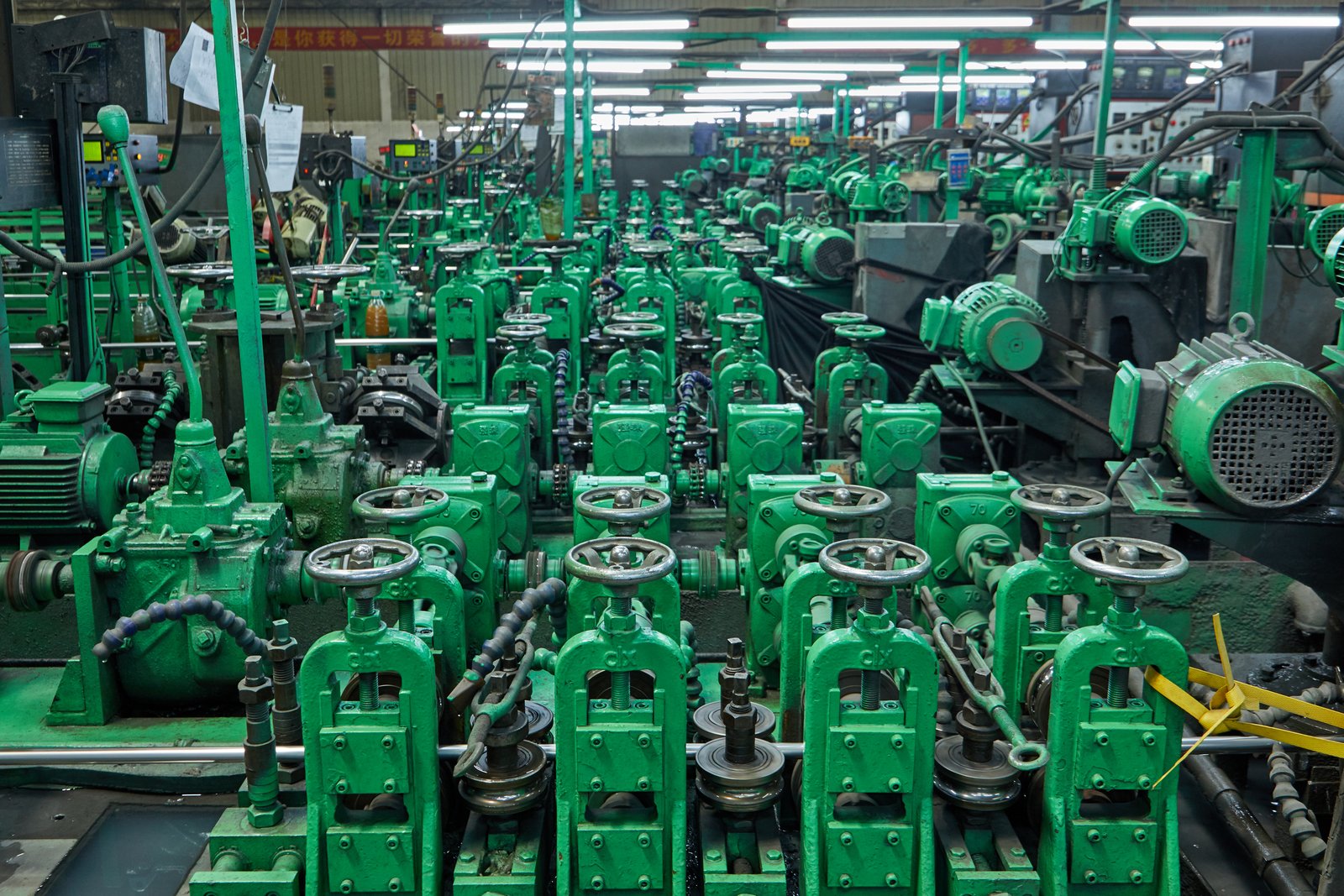
I often share a story about a client, an equipment integrator in India, who was building skids for a food processing application. They were using our MFY-supplied stainless steel tubes. During their design review, they had a question about the allowable stress for SS304L at a slightly elevated pasteurization temperature. They had a copy of the ASME code but were unsure if they were interpreting the table correctly. Instead of just confirming the value, we walked them through the process on a video call. We showed them how to find the material specification (ASTM A312), the grade (TP304L), and then trace across the row to their specific design temperature of 180°F. We highlighted how the value was listed in ksi (kilopounds per square inch) and needed to be converted to psi for their formula. This simple act of collaborative verification did more than just answer a question; it empowered their engineering team and built a deep sense of trust. They knew they weren't just buying a product; they were gaining a partner invested in their success. It's this level of support that bridges the gap between simply having the standards and applying them correctly and confidently in the real world.
Navigating ASME B31.3 Table A-1
Table A-1, "Basic Allowable Stresses in Tension for Metals," is the definitive source for 'S' values within the B31.3 code. Navigating it accurately is a fundamental skill. The first step is to identify the material's "Spec. No." and "Type or Grade." This information is found on the material's MTC. For example, a common type of seamless stainless steel pipe is specified as ASTM A312 TP316L6. In Table A-1, you would first find the section for stainless steels, then look for the row corresponding to A312 TP316L.
Once you have located the correct material row, the next step is to move horizontally across the table to find the column that matches your design temperature. The temperatures are listed in degrees Fahrenheit and Celsius, and it is critical to use the column that equals or just exceeds your maximum operating temperature. You should not interpolate between temperature columns; the code requires you to use the allowable stress for the next highest temperature listed. For instance, if your design temperature is 280°C, you must use the value in the 300°C column, not a value halfway between the 250°C and 300°C columns.
ly, you read the value at the intersection of the material row and the temperature column. It's crucial to pay attention to the units. The table lists stress values in ksi (1 ksi = 1,000 psi). When you use this 'S' value in the pressure design formula, you must convert it to psi by multiplying by 1,000. This methodical, step-by-step process—Spec > Grade > Temp > Value > Units—ensures accuracy and compliance, removing any guesswork from this critical input.
The Influence of Temperature on Allowable Stress
The relationship between temperature and a metal's strength is a fundamental concept in material science that is central to the ASME code. As the temperature of stainless steel increases, its atoms vibrate more energetically, making it easier for dislocations to move within the crystal structure. This results in a decrease in both its yield strength and ultimate tensile strength. Consequently, its ability to safely contain pressure is reduced. The 'S' values in Table A-1 directly reflect this physical reality.
The code derives the 'S' value by taking the lowest of several metrics, such as one-third of the specified minimum tensile strength at room temperature, or two-thirds of the specified minimum yield strength at temperature, and applying safety factors. The fact that 'S' decreases with temperature is a primary safety consideration. A pipe that is perfectly safe at ambient temperature could be dangerously under-specified if its strength reduction at operating temperature isn't accounted for.
This principle has major implications for material selection. An engineer might be comparing two stainless steel alloys for a high-temperature service. Alloy A might have a higher allowable stress at room temperature, but Alloy B, containing elements like molybdenum (as in 316L), might retain its strength much better at the design temperature. Therefore, Alloy B could be the safer and potentially more economical choice, as it might allow for a thinner pipe wall. This is a perfect illustration of how a deeper understanding of the "why" behind the numbers in the code leads to better engineering decisions.
| Design Temperature (°F) | Design Temperature (°C) | Allowable Stress 'S' for A312 TP316L (ksi) | Allowable Stress 'S' for A312 TP304L (ksi) |
|---|---|---|---|
| 100 | 38 | 20.0 | 20.0 |
| 300 | 149 | 16.7 | 16.7 |
| 500 | 260 | 15.6 | 14.1 |
| 700 | 371 | 14.6 | 12.9 |
| 900 | 482 | 13.9 | 12.1 |
| 1000 | 538 | 13.6 | 10.1 |
Case Study: Material Selection for a High-Temperature Application
Let's consider a practical case: a chemical engineering contractor in Southeast Asia is designing a piping circuit for a new reactor. The operating temperature is a constant 750°F (approx. 400°C). The initial proposal calls for using ASTM A312 TP304L pipe due to its wide availability and lower base cost. However, a senior engineer flags the temperature as a point of concern and suggests a comparison with TP316L. As their pipe supplier, we were asked to provide the technical data to support their analysis.
Using Table A-1, we first look up the 'S' value for TP304L at 750°F. The value is 12.5 ksi. We then do the same for TP316L and find its 'S' value is significantly higher at 14.4 ksi. This ~15% difference in allowable stress is critical. When they plugged these values into the pressure design formula for their required design pressure, the result was clear. The pipe made from 304L required a wall thickness corresponding to Schedule 40S to meet the safety requirements.
In contrast, the higher allowable stress of the 316L material meant that a thinner Schedule 10S pipe wall was sufficient to handle the same pressure safely. While the per-kilogram cost of 316L is higher than 304L, the Schedule 10S pipe is substantially lighter than the Schedule 40S pipe. This resulted in a lower total material cost for the 316L option, not to mention reduced weight, easier handling and welding on-site, and lower structural support costs. This analysis, rooted directly in the correct application of Table A-1, allowed the client to make a data-driven decision that improved safety, reduced overall project cost, and ensured long-term reliability at the elevated operating temperature.
ASME B31.3 Table A-1 provides allowable stress valuesTrue
Table A-1 in ASME B31.3 is the authoritative source for determining the allowable stress (S) values for stainless steel pipes at various temperatures.
Interpolation between temperature columns is allowedFalse
The ASME code requires using the next highest temperature column's value rather than interpolating between temperature values.
What is the step-by-step procedure for calculating pressure ratings?
You've gathered your parameters7 and located the allowable stress, but now you face the final formula. A simple slip of a decimal or a missed variable can lead to a significant error in the final pressure rating, undermining all your careful prep work. The key is to follow a clear, step-by-step procedure to ensure every detail is correctly applied.
*The procedure is 1) Gather all inputs (D, t, S, E, Y). 2) Account for manufacturing tolerance in wall thickness (t).3) Apply the ASME B31.3 formula for internal pressure: P = (2 S E t) / D.4) Ensure your units are consistent throughout the calculation.**
This structured approach transforms the calculation from a daunting task into a manageable process. It ensures that critical adjustments, like accounting for the 12.5% mill tolerance on wall thickness, are not forgotten. I often use a simple spreadsheet template when discussing calculations with clients. This not only performs the math but also lays out each input clearly, creating a transparent record. It helps everyone see how each parameter influences the final result, fostering a deeper understanding of the design's underlying principles.
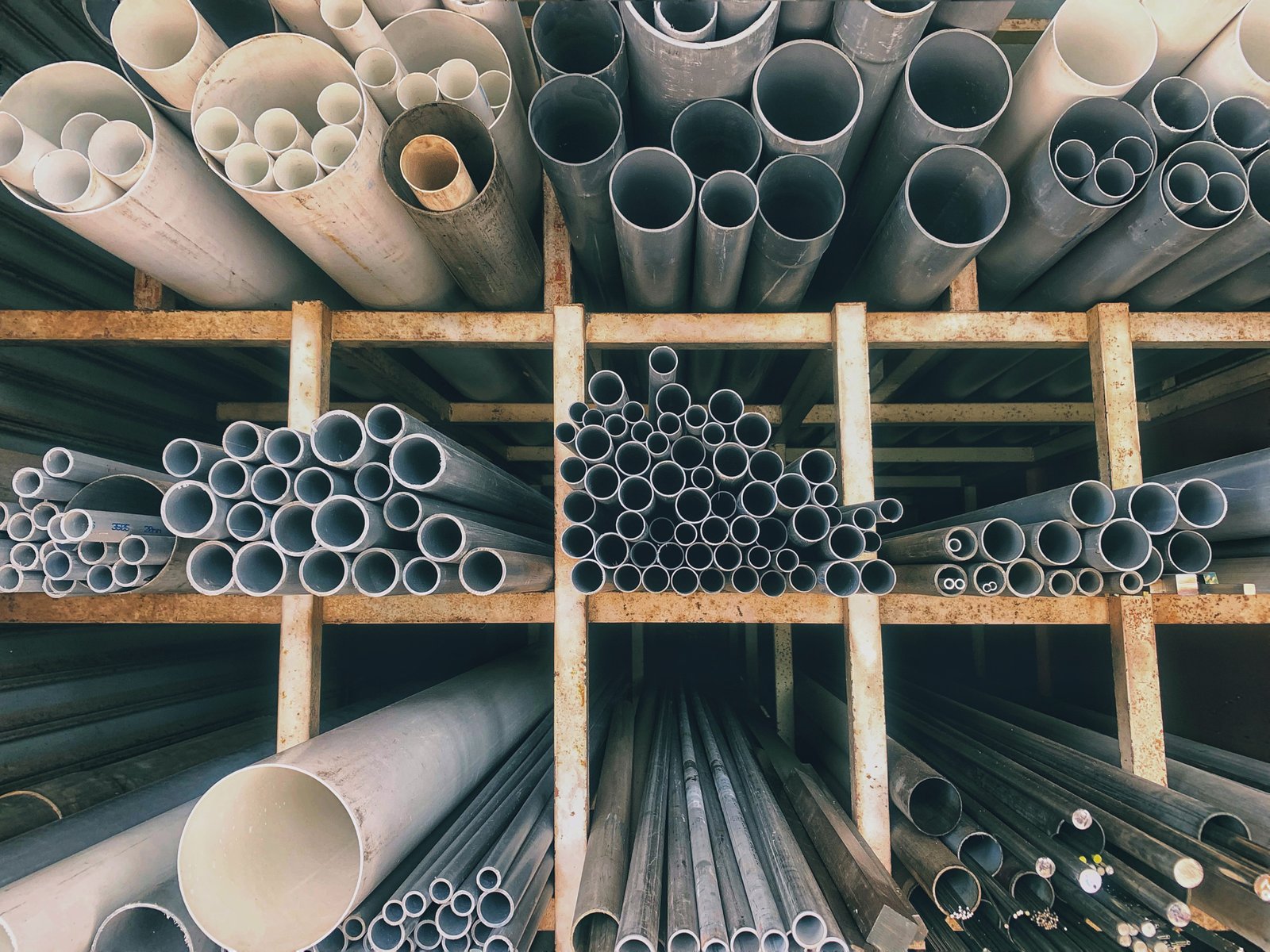
Let's walk through a common scenario involving one of our distributor clients in India. They supply stainless steel pipes to various local manufacturing units, who often need to verify that a standard stock pipe is suitable for a new application. A typical request might be: "Is a 4-inch Schedule 40S pipe, made of SS316L (ASTM A312), suitable for a service pressure of 600 psi at 200°F?" Instead of just giving a yes/no answer, we guide them through the calculation. This empowers the distributor to better serve their customers and manage their own risk. We provide them with the standard dimensions for the pipe and walk them through finding the 'S' value. Then, we meticulously apply each value to the formula, showing them the impact of the weld quality factor if they are using a welded pipe, and most importantly, the effect of the wall thickness tolerance. This step-by-step verification process is a crucial service. It ensures that the pipe is not just sold, but applied correctly and safely, strengthening the entire supply chain from our manufacturing floor at MFY to the final end-user. It's a demonstration of our commitment to being more than a supplier, but a partner in our clients' success.
The Core Formula: Unpacking P = (2SEt)/D
The cornerstone of pressure design for a straight pipe under internal pressure in ASME B31.3 is the formula P = (2SEt)/D. Let's break down its components to understand the engineering principles at play. This formula is a simplified version of Barlow's formula8, which relates the internal pressure, allowable stress, and the physical dimensions of a cylinder. It essentially calculates the hoop stress in the pipe wall and ensures it does not exceed the material's safe limit.
- P is the internal design gauge pressure. This is the value you are solving for—the maximum pressure the pipe can safely withstand according to the code.
- S is the allowable stress of the material at the design temperature, which we've discussed is found in Table A-1. This is the material's strength, de-rated for safety.
- E is the longitudinal weld joint quality factor. For seamless pipe, E=1.0. For welded pipes, it's a value less than 1.0 (e.g., 0.85 for ERW), which accounts for the potential of the weld being a weak point.
- t is the pipe wall thickness. Critically, this is the design thickness, which must account for manufacturing tolerances and any required corrosion allowance.
- D is the specified outside diameter of the pipe.
The logic is intuitive: the pressure rating (P) increases with higher allowable stress (S) or a thicker wall (t). Conversely, it decreases for a larger diameter pipe (D) because the same pressure acts over a larger area, creating more force. The formula provides a robust, conservative, and universally accepted method for ensuring a pipe's structural integrity under pressure.
Worked Example: A 4-inch Schedule 40S SS316L Pipe
Let's apply the procedure to the request from our Indian distributor: verify the suitability of a 4-inch Schedule 40S, ASTM A312 TP316L welded pipe for 600 psi at 200°F.
Step 1: Gather Parameters
- Pipe Size: 4-inch Sch 40S. From ASME B36.19M, Outside Diameter (D) = 4.5 inches. Nominal Wall Thickness (t_nominal) = 0.237 inches.
- Material: ASTM A312 TP316L.
- Design Temperature: 200°F (93°C).
- Manufacturing: Welded. Per ASME B31.3, the quality factor (E) = 0.85 for ASTM A312 ERW pipe.
- 'Y' Factor: The temperature is below 900°F, so Y = 0.4 (but it doesn't appear in this basic formula).
Step 2: Determine Allowable Stress (S)
- From ASME B31.3 Table A-1, for A312 TP316L at 200°F, the allowable stress S = 20.0 ksi, which is 20,000 psi.
Step 3: Calculate Design Wall Thickness (t)
- We must account for the 12.5% mill tolerance.
t = t_nominal * 0.875 = 0.237 in * 0.875 = 0.207 inches.- Let's assume a minimal corrosion allowance for this example, so we will use this as our design thickness.
Step 4: Apply the Formula
P = (2 * S * E * t) / DP = (2 * 20,000 psi * 0.85 * 0.207 in) / 4.5 inP = (7038) / 4.5P ≈ 1564 psi
The calculated Maximum Allowable Working Pressure (MAWP) is approximately 1,564 psi. Since this is significantly higher than the required service pressure of 600 psi, the 4-inch Schedule 40S welded 316L pipe is more than suitable for this application, with a substantial safety margin.
Adjustments and Further Considerations
The worked example shows the core process, but real-world engineering often requires more nuance. One of the most important factors we already used is the mill tolerance. Ignoring this 12.5% reduction9 in wall thickness would have resulted in a calculated pressure rating of 1787 psi, an unsafe overestimation of about 14%. This highlights why adhering to the code's conservative principles is not optional.
Another key consideration is corrosion allowance. In our example, we assumed it was negligible. However, if this pipe were used in a chemical service where a corrosion rate of 0.1 mm/year was expected over a 15-year design life, a corrosion allowance of 1.5 mm (or 0.06 inches) would be required. This allowance is subtracted from the design thickness t before the pressure calculation. The new t would be 0.207 - 0.06 = 0.147 inches. Recalculating with this t gives P ≈ 1109 psi. The rating is still sufficient, but the safety margin is reduced, demonstrating how crucial it is to account for the intended service life and environment.
ly, remember that this calculation is for a straight piece of pipe. The code has separate, more complex rules for bends, fittings, flanges, and branch connections, which are often the limiting factors in a piping system's pressure rating. A full system verification must analyze these components as well. As a supplier, we ensure that the fittings and flanges we provide also have ratings consistent with the pipes they will be connected to, enabling our clients to build complete, compliant systems.
Mill tolerance reduces wall thicknessTrue
ASME B31.3 requires accounting for a 12.5% reduction in nominal wall thickness to account for manufacturing variations.
E=1.0 for welded pipesFalse
The quality factor E is less than 1.0 for welded pipes (typically 0.85) to account for potential weld weaknesses.
How can one verify the results of pressure calculations per ASME B31.3?
You've completed the calculation and have a final pressure rating. But how can you be sure it's correct? An unverified calculation is merely a number; it lacks the authority and confidence required for a critical application. The professional standard is to use multiple methods to cross-check and validate your work.
To verify ASME B31.3 pressure calculation results, you should perform an independent peer review by another qualified engineer, use validated commercial software as a comparison, and cross-reference your results against pre-calculated pressure-temperature tables from reputable sources like manufacturers or industry handbooks.
This multi-layered approach is the best defense against human error. It ensures that simple typos, misinterpretations of the code, or incorrect inputs are caught before they can become a real-world problem. At MFY, our internal engineering and quality teams use this very process. Before we provide technical data to a client, it's checked and double-checked. This rigor is a core part of our commitment to quality and is essential for building the trust required in the global stainless steel supply chain.
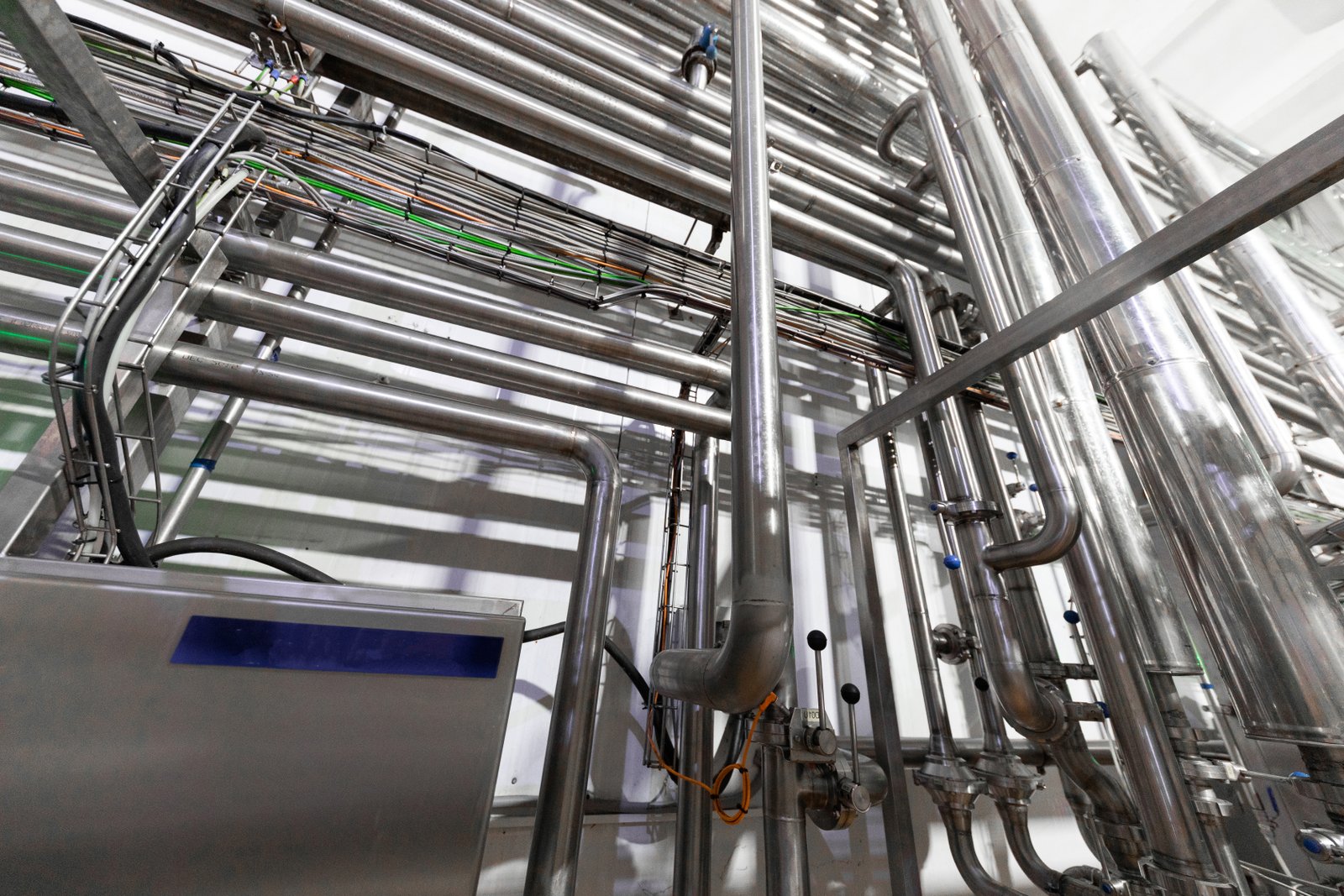
Verification is a non-negotiable step in responsible engineering. I recall a situation with a construction contractor working on a large-scale manufacturing plant expansion. Their junior engineer had performed all the pressure calculations for the utility piping. The numbers looked reasonable on the surface. However, their company policy mandated a peer review. A senior engineer, upon reviewing the calculation package, noticed that for all the welded pipe sections, the junior engineer had mistakenly used a quality factor 'E' of 1.0 (for seamless pipe) instead of the correct 0.85. This single error inflated the calculated pressure ratings by over 17%. Had this not been caught, the contractor would have installed pipes that did not meet the project's specified safety margins. This experience was a powerful reminder that verification isn't about mistrust; it's about process integrity. It's the safety net that protects projects, companies, and people from the consequences of simple, honest mistakes. It also reinforced our practice at MFY to always be explicit about the 'E' factor when discussing welded pipe options with our clients.
The Four-Eyes Principle: Peer Review and Manual Checks
The most fundamental verification method is the "four-eyes principle," which simply means having at least one other qualified person review and approve the work. In engineering, this is known as a peer review. A fresh set of eyes is invaluable for catching errors that the original engineer, who is deeply familiar with their own work, might overlook. This includes everything from simple typographical errors in inputting a diameter to more complex mistakes like using the allowable stress value from the wrong temperature column in Table A-1.
The reviewer should not just glance at the final answer. A proper peer review involves starting from scratch with the same input parameters and independently performing the calculation. The reviewer should check the source of every parameter: Was the wall thickness taken from the correct pipe schedule chart? Was the 'S' value correctly identified from the latest edition of the ASME B31.3 code for the specified material and temperature? Was the 12.5% mill tolerance correctly applied?
This manual, methodical check is the bedrock of engineering quality assurance. It is a systematic process designed to catch errors early when they are cheap and easy to fix. For any contractor or engineering firm, implementing a mandatory peer review process for all critical calculations like pressure ratings is one of the most effective risk mitigation strategies they can employ. It fosters a culture of collaboration and shared responsibility for safety and quality.
Leveraging Technology: Software and Digital Tools
In today's digitally-driven environment, engineers have access to powerful software tools designed specifically for pipe stress analysis and pressure design, such as Intergraph CAESAR II®10, PV Elite®, or other similar programs. These software packages have the ASME B31.3 rules and material databases built directly into them. By inputting the same parameters—pipe size, material, temperature, corrosion allowance—the software can instantly calculate the pressure rating. Using such a tool provides an excellent, independent verification of a manual calculation.
However, technology is not a substitute for understanding. The "garbage in, garbage out" principle applies absolutely. The software is only as accurate as the information the engineer provides. If the wrong material is selected from the dropdown menu or the wrong design temperature is entered, the software will produce a technically "correct" but practically wrong and unsafe result. Therefore, these tools should be used as a means of verification, not as a black box that provides answers without understanding.
At MFY, we are embracing digital innovation to support this process. By providing our clients with clear, digital Mill Test Certificates (MTCs), we make it easier for them to input accurate and traceable material data into these software tools. This integration of a reliable digital data stream from the supplier into the client's digital engineering workflow helps reduce the risk of manual data entry errors and streamlines the entire verification process, ensuring greater accuracy and efficiency.
Cross-Referencing with Manufacturer Data and Standards
A final, valuable "sanity check" is to compare your calculated results with pre-calculated pressure-temperature (P-T) rating tables11. These tables are often published by reputable pipe manufacturers (like MFY), industry bodies, and in engineering handbooks. These tables list standard pipe sizes, materials, and schedules, and provide their MAWP (Maximum Allowable Working Pressure) at various temperatures.
For instance, after manually calculating that a 4-inch Sch 40S 316L pipe has a rating of ~1564 psi at 200°F, you could look up a P-T rating chart for that same pipe. If the chart shows a value in the same ballpark (e.g., 1550-1600 psi), it provides strong confidence that your calculation is correct. Conversely, if your result is wildly different from the published value, it is a major red flag that you need to re-check every step of your work.
It is crucial, however, to understand the basis of the manufacturer's table. A reputable supplier will state clearly that their tables are calculated in accordance with ASME B31.3 and will specify the assumptions used (e.g., which 'E' factor and manufacturing tolerances were applied). These tables cannot replace a project-specific calculation, especially when a significant corrosion allowance or other unique conditions are involved. However, as a verification tool and for preliminary assessments, they are an incredibly useful and practical resource that links theoretical calculations to real-world, commercially available products.
Peer review catches calculation errorsTrue
The article demonstrates how peer review identified a 17% error in pressure calculations due to incorrect quality factor application.
Software eliminates manual verification needsFalse
The article emphasizes that software tools require careful input validation and shouldn't replace manual verification processes.
Conclusion
Mastering ASME B31.3 calculations is fundamental for ensuring the safety, compliance, and efficiency of any process piping system. From selecting materials to verifying results, each step is critical. A successful project depends on partnering with a knowledgeable supplier who deeply understands these global standards.
-
Learn how ASME B31.3 ensures safety via accurate pressure rating calculations ↩
-
Understand ASME B31.3's role in stainless pipes for safety in industrial applications ↩
-
Understand the structural differences between seamless and welded pipes for informed material choice. ↩
-
Find standard pipe dimensions critical for accurate stress calculations. ↩
-
Explore how temperature affects the mechanical properties and allowable stress of stainless steel pipes. ↩
-
Discover ASTM A312 TP316L characteristics and applications in piping systems ↩
-
Gain insight into essential parameters impacting pressure calculations in piping systems ↩
-
Understand Barlow's formula's role in calculating pipe pressure ratings ↩
-
Discover how mill tolerance affects pipeline pressure calculations ↩
-
Discover how CAESAR II® streamlines ASME B31.3 compliance and verification processes ↩
-
Access reliable P-T rating tables to verify calculated pipe pressure ratings ↩
Have Questions or Need More Information?
Get in touch with us for personalized assistance and expert advice.
